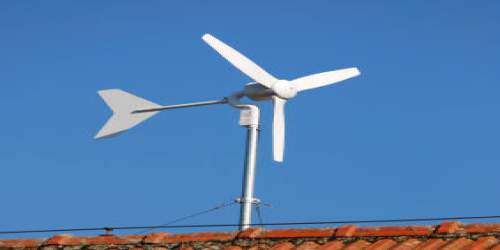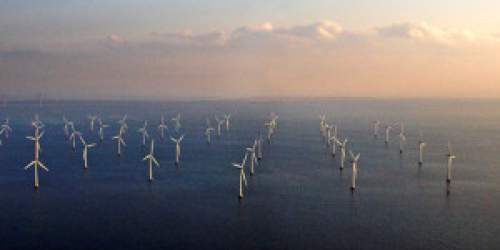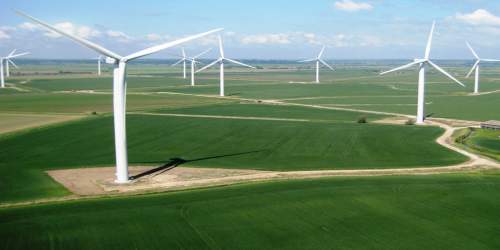According to new research July, August and September saw renewable energy sources provide more electricity to UK homes and businesses than fossil fuels for the first time, setting a record by increasing it’s share of the electricity mix to 40%.
Earlier on this year government statistics also showed that more than half of the UK’s electricity in 2018 was generated from low-carbon sources with renewables and nuclear reactors providing 52% of power generation.
Analysis by the National Grid suggested that 2019 would see more British electricity coming from zero-carbon sources including wind, solar, hydro and nuclear than from fossil fuels since the industrial revolution. Their analysis also included the mix of power coming through underwater cables known as interconnectors from other countries, such as France.
Just ten years ago fossil fuels made up four fifths of the UK’s electricity supply. Climate website, Carbon Brief said that this is the first time since the first public power generating station opened in 1882 that renewables have outpaced traditional fossil fuels. Wind farms, solar panels, hydropower and biomass plants have outdone their rivals, fossil fuel plants. Carbon Brief found that renewable sources generated around 29.5 terawatt hours of power higher than the 29.1 for power stations fired by coal, gas and oil. Latest analysis by Carbon brief shows that coal-fired power was less than 1% of all electricity generated.
Responding to the latest analysis, RenewableUK’s, Luke Clark, director of strategic communications said:
“This is great news not just for the environment but also for consumers. The expansion of clean power is set to accelerate in the years ahead, as our offshore wind capacity will more than treble by 2030, generating more than a third of the UK’s electricity."
However, Luke Clark also went on to say:
“The public wants to see faster action to tackle climate change and meet our net zero emissions target. If Government were to back a range of technologies - like onshore wind and marine renewables - in the same way as it is backing offshore wind, consumers and businesses would be able to fully reap the benefits of the transition to a low carbon economy.”
Luke Clark pointed out that with the cost of offshore wind projects falling to an all-time low, on and offshore wind was the cheapest largest scale source of power adding that the industry hoped to treble the size of its offshore wind sector by 2030 to generate more than a third of the UK’s electricity.
The next generation of offshore windfarms is predicted to cost about £40 for every megawatt hour of electricity generated, less than the average market price for electricity on the wholesale energy markets.
Solar power has continued to contribute to the rise in renewable energy use. It was the fastest-growing source of power worldwide in 2018, overtaking the growth in all other forms of power generation for the first time.
A milestone has been reached with new offshore windfarms opening in the third quarter of this year. These windfarms helped push renewables past fossil fuels creating a crucial tipping point in Britain’s energy transition. Wind power has long been considered an excellent green energy alternative.
The Labour party have discussed plans for a Green Industrial Revolution should they come to power to include growing the off-shore wind industry five-fold in a decade by building an extra 37 giant offshore wind farms which would in turn create 70,000 new jobs.
British coal plants are shutting down in advance of the 2025 ban. Just 4 coal plants will remain in the UK by next spring: The West Burton A and Ratcliffe-on-Soar plants in Nottinghamshire, Kilroot in Northern Ireland and two generation units at the Drax site in North Yorkshire, which are designated for conversion to burn gas.
The bulk of the diminishing share of fossil fuels in the energy system is made up of gas-fired power at 38%. In the last quarter slightly less than a fifth of the UK’s electricity was provided by nuclear power.
Following a series of windfarm openings in recent years wind power has become the UK’s strongest source of renewable energy making up 20% of the UK’s electricity. Electricity from renewable biomass plants made up 12% of the energy system, while solar panels contributed 6%.
The UK boasts the world’s largest offshore windfarm, the Hornsea One project which reached a peak capacity of 1.200MW in October. This followed the opening of the Beatrice windfarm off the north-east coast of Scotland over the summer.
Working together these schemes almost doubled the 2.100MW of offshore capacity which began powering homes in 2018.
Kwasi Kwarteng, the minister for energy and clean growth, said
¨The renewables record is “yet another milestone on our path towards ending our contribution to climate change altogether by 2050. Already, we’ve cut emissions by 40% while growing the economy by two thirds since 1990. Now, with more offshore wind projects on the way at record low prices we plan to go even further and faster in the years to come.”
Renewable UK has expressed that as well as being good for the environment the growth of the renewables industry is good news for energy bills due to the steep fall in the cost of wind and solar power technologies in recent years.
Find out more about solar here.





























